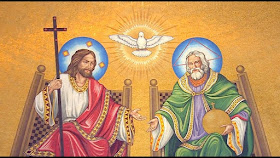7 Fast Facts about the Russian Mennonites
#1 Anabaptist Origins
The Anabaptist (literally meaning “to baptize again”) movement began in 1525 when people like Conrad Grebel, Felix Manz and others baptized each other a second time as adults in a small meeting in Switzerland.
The Anabaptist were originally part of the Protestant Reformation but soon came to believe in such further distinctions as believer’s baptism (as opposed to infant baptism), complete separation of church and state and of, course, pacifism (the unwillingness to bear arms).
 |
| Menno Simons |
#2 Menno Simons
Menno Simons (1496 – 1561) was a Roman Catholic priest in Friesland (now a province of the Netherlands). He began to question some Roman Catholic practices and, when his Anabaptist brother was killed for his beliefs, he became an integral part of the Anabaptist movement. It is from Menno that Mennonites take their name.
#3 European Persecution
Russian Mennonites are descended from the Dutch Anabaptists who later moved to Prussia - an old kingdom that now covers large parts of Germany and Poland. During the 16th century Mennonites suffered severe persecution for their beliefs from the hands of both the Roman Catholic Church, the Protestant Church and various European heads of state. This persecution affected their sense of identity and brought them closer together.
The Mennonites would often be invited by a king or prince to live in their territory because they were known as honest, hard workers who could farm almost any type of land. However, whenever there was a change of influence on the leadership of that territory, the Mennonites would be forced to move again to maintain their way of life and avoid persecution.
 |
| Catherine the Great of Russia |
#4 Catherine the Great of Russia
In 1786, Catherine the Great, Empress of Russia sent an envoy to the Mennonites in the Prussia area to invite them to come and live in her newly acquired south western lands now known as Ukraine. In exchange they would receive religious freedom and military exemption.
According to a Mennonite education website: “The first four hundred families to arrive in Russia, settled on the banks of the Chortitza River, a tributary of the Dnieper River. This village became known as the Chortitza Colony… the Chortitza Colony quickly grew into 15 separate villages with 89,100 acres of land by 1800. A second Colony, Molotschna, was established one hundred miles southeast of Chortitz a few years later.”
#5 The First Exodus from Russia
Eventually the Russian government threatened to take such rights as military exemption and the Russian Mennonites feared they would soon lose their autonomy and identity. As a result, between 1873 and 1884, approximately 18,000 Mennonites left Russia. About 7000 of those arrived in Canada, settling in Manitoba.
#6 The Russian Revolution and World Wars
The Russian Revolution of 1917 created great turmoil for the remaining Mennonites as they were often harassed and killed by Russian peasants. Some young men rethought their stance on pacifism in these dark times in order to protect their families. They were called “die Selbstschutz” meaning self-protectors.
The Mennonite education site says: “During World War I, many of the Mennonites who had remained in Russia lost their lives as a result of various illnesses, such as epidemic typhus. Many also had their homes plundered and some families were massacred by bandits. After this time of war, revolution, anarchy and famine, approximately 25, 000 more Mennonites immigrated to North America in the 1920’s. After World War II another 12, 000 Mennonite refugees were accepted in Canada and the United States.”
#7 My Family
My great great great grandparents were Johann and Anna Harder. According to various genealogical records, Johann and Anna were born in the same area now known as Ukraine in the early 1800’s. They and their children were among the first wave of Russian Mennonites to immigrate to North America. In 1876 they landed at Quebec City and made their way to Manitoba.
Among their children was my great great grandfather, Isaak Harder. He was born in Russia but immigrated about the age of 9. He would go on to marry Helena Penner and they would go on to have my great grandfather Cornelius P. Harder after having moved to Saskatchewan.
Cornelius P. Harder would father my grandfather (among many other children) with Agatha Derksen. They named him Cornelius D. Harder. My grandfather would later use his middle initial to call himself “Del”. He married my grandmother, Hilda Sanders and the rest is history.
P.S. My wife and I would end up adopting a son from Vietnam. We joined another family as they were also adopting a Vietnamese boy from the same orphanage. In an amazing turn of events, we eventually found out that the husband and I were actually distant cousins – we both descended from Johann and Anna Harder of the Russian Mennonites.



















